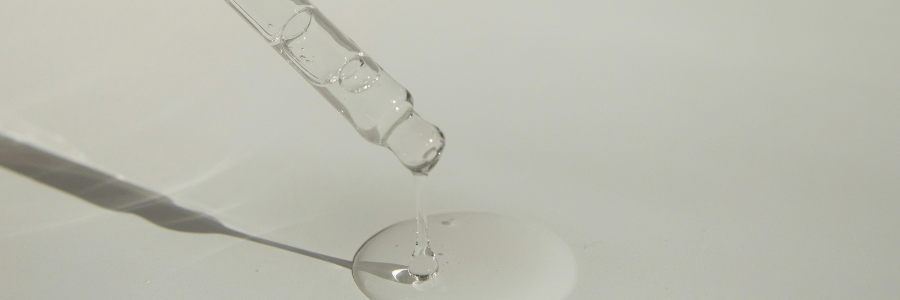Natural treatments for athlete's foot
Toenail fungus, medically known as onychomycosis, is a common fungal condition that can cause significant inconvenience. Traditional treatments vary, but natural treatments are gaining in popularity, with alpaca wool emerging as a promising solution. In this article, we'll explore nail fungus in depth, its causes, conventional treatments and natural treatments help in the healing of foot fungus.
Understanding toenail fungus
Nail fungus is a fungal infection that can affect any part of the nail, including the nail bed and the nail plate itself. It usually occurs as a result of excessive proliferation of dermatophyte fungi. Symptoms include nail discoloration, thickening, deformation and, in some cases, associated pain.
Conventional treatments for toenail fungus often involve the use of topical or oral antifungals, ointments, or even laser remedy in more severe cases. However, these options can have drawbacks, including side effects, prolonged treatment periods and variable success rates. In addition, recurrence of infection is not uncommon.
Alpaca Wool:
The best Alpaca wool socks are those of high quality, suitable for everyday use, and should be fitted to improve breathability. Regular maintenance of good foot hygiene, avoiding foot rubbing and drying the area concerned before using Alpaca wool socks, is essential to derive maximum benefit. To guarantee the effectiveness of Alpaca Wool in the natural treatment of nail fungus, follow these practices: choose high-quality Alpaca Wool socks, maintain good foot hygiene and make sure the application is compatible with your daily routine. By following these practices, you'll be able to effectively treat nail fungus and prevent the spread of fungus and infection.
Alternative solutions
1. Melaleuca (Tea Tree) oil:

Melaleuca oil's antifungal and antibacterial properties are as follows:
Antifungal Rich: The compounds in melaleuca oil, including terpineol and terpinene, have powerful antifungal properties. These compounds affect the growth and reproduction of fungi responsible for nail fungus by altering their cell membranes.Natural antimicrobials: Melaleuca oil has antibacterial properties in addition to its antifungal effects. This means it can help prevent secondary bacterial infections, which are common in people with nail fungus.
2. Apple cider vinegar :

Apple cider vinegar provides a welcoming acidic environment for fungi. Apple cider vinegar and warm water should be mixed equally, then soak your feet in this natural treatment for 15 to 20 minutes every day.
Beneficial qualities:
Create an acidic environment: The fungi that cause foot fungus live in warm, damp conditions. Thanks to its acidity, apple cider vinegar provides these fungi with an inhospitable environment. Apple cider vinegar makes it difficult for fungi to survive and spread by lowering the pH of the skin.
Antifungal and antibacterial action: organic acids such as acetic acid in apple cider vinegar have antifungal and antibacterial properties. These substances destroy the fungi responsible for athlete's foot and the bacteria that can develop in the affected areas.
3. Baking soda:

For the best natural treatment, apply this solution at least twice a week. Regular application is essential to maintain a healthy environment for bacteria. If symptoms improve, continue to use baking soda sporadically as a preventative measure.
4. Organic oil:

Organic oil, rich in antifungal and antibacterial compounds, is another natural treatment for athlete's foot. It can help eliminate the bacteria responsible for the infection and promote rapid healing. Dilute a few drops of oil in a carrier oil such as coconut or sweet almond oil to avoid irritation. Apply the solution to the affected feet, making sure to cover the entire surface of the foot and surrounding areas. For best results, apply this solution twice a day.
Probiotics play a crucial role in maintaining intestinal health and preventing athlete's foot. Incorporate probiotic-rich foods such as natural yoghurt, fermented beer and fermented couscous into your diet to ensure the presence of a diverse range of beneficial bacteria. Maintain a balanced diet rich in fibre, vegetables and fermented foods to promote a healthy intestinal environment.
6. Aloe vera :

Aloe vera, known for its soothing properties, can also play a role in the natural treatment of athlete's foot. Extract the gel from a fresh aloe leaf and apply it directly to the affected feet several times a day. Store the gel in the fridge to prolong its shelf life and maximise its benefits. Continue to use the gel even after the symptoms have disappeared to avoid any recurrence.
Complementary measures for a holistic approach include maintaining clean hygiene, changing shoes and socks regularly, and consulting a healthcare professional if symptoms persist despite natural remedies.
To conclude, toenail fungus can be a stubborn condition, but alpaca wool offers an innovative natural treatment to complement traditional treatments. By choosing quality alpaca wool socks, you can not only benefit from a comfortable and stylish solution, but also potentially speed up the healing process of your nail fungus. Don't forget to consult a healthcare professional for a precise diagnosis and advice tailored to your individual situation.
-
Muju Socks - Classic
- 35 - 38
- 39 - 42
- 43 - 46
23,90 €
-
Sami Premium Socks - Classic
- 35 - 38
- 39 - 42
- 43 - 46
29,90 €
-
Incas Socks - Classic
- 35 - 38
- 39 - 42
- 43 - 46
23,90 €
-
Yupa Socks - Classic
- 35 - 38
- 39 - 42
- 43 - 46
23,90 €
-
Sami Premium Socks - Classic
- 35 - 38
- 39 - 42
- 43 - 46
29,90 €












